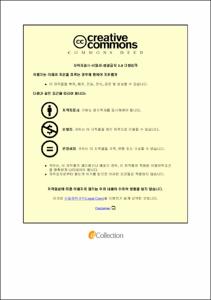Ulsan Univ. Repository
Thesis
General Graduate School
Mechanical & Automotive Engineering
2. Theses (Ph.D)
OPTIMIZATION OF SELECTIVE LASER MELTING PROCESS PARAMETERS FOR Ti6Al4V PARTS USING DEEP LEARNING
- Abstract
- This thesis is a study geared towards optimizing Selective Laser Melting (SLM) crucial process parameters for manufacturing medical application parts based on deep learning. Titanium alloys, particularly Ti-6Al-4V ELI, are among the most commonly used materials in the medical industry, due to their superior biocompatibility resistance and specific strength. However, implant components are often a complex geometric shape that is difficultly fabricated by conventional methods such as formative and subtractive techniques. Additionally, that Titanium alloys are expensive materials leads to an increase in manufacturing cost because of waste material. Selective laser melting is an Additive Manufacturing method to fabricate complicated three-dimensional products, by solidifying successive layers with a layer of powder materials, based on a CAD model. The SLM is associated with full melting of powder material. There are many advantages achieved by SLM method, including high density and strength of printed part; negligible waste material by recycling the unmelted powder; printing complex shapes that the traditional manufacturing methods could not; no limitation during the design of a CAD model; customized products, among others. Despite the advantages of SLM technology, printing a product with properties satisfy a user requirement is difficult due to many considerations. There are many process parameters that affect the SLM processing and printed product, such as laser properties, material characteristics, printing conditions, machine properties. Additionally, the range value to modify these parameters are broad. So much time, expenditure and expert knowledge about the process and materials are therefore needed to operate the SLM, in order to achieve a desirable printed product. Thus, developing an optimization process parameters system for SLM processing is significantly necessary. Many optimizing methods have been researched, namely Taguchi, design of experiment (DOE), response surface method (RSM), genetic algorithm, and fuzzy method. However, they have investigated individual parameters only, and the accuracy of these methods is affected strongly by non-linear problems.
In this thesis, deep learning that efficiently solves a non-linear issue was applied. Four significant essential process parameters, namely laser power, laser velocity, layer thickness and hatch distance, were investigated. Density and surface roughness of the product printed by the SLM technique were considered simultaneously. Density is an essential element of osteogenesis in implants, while surface roughness affects mechanical stability, osseointegration capabilities, interlocking due to bone growth, improve implant anchorage in a bone. Firstly, a deep neural network with backpropagation was applied, and a supervised learning algorithm was used for network learning. An adaptive momentum algorithm was utilized to solve some unwanted problems during the training of a neural network model, namely speed up training speed, convergence, and escape the local minimum. Regularization methods, such as weight decay and dropout, were handled by the cost function to avoid over-training of the neural network model. The deep neural network after building and validation was used to predict the properties of printed product from a given data set. A selection system was built to choose the optimal process parameters, of which properties of product satisfy a specific user requirement which are the inputs of the system. Due to the optimization system, an SLM operator does not need to be an experienced person, neither need to spend much time on the testing step to print a desirable product. The system is a significant relevant module for pre-processing of the SLM printing. Through this thesis, related literature will be introduced firstly. The influences of process parameters on the SLM process and printed product qualities are presented. Development of a deep neural network for predicting follows. Subsequent section is building an optimization system with a graphical user interface. The final part presents a case study used to verify the developed optimization system.
- Issued Date
- 2020
- Awarded Date
- 2020-02
- Type
- Dissertation
- Affiliation
- 울산대학교
- Department
- 일반대학원 기계자동차공학과
- Advisor
- 이장명
- Degree
- Doctor
- Publisher
- 울산대학교 일반대학원 기계자동차공학과
- Language
- eng
- Rights
- 울산대학교 논문은 저작권에 의해 보호받습니다.
- Appears in Collections:
- Mechanical & Automotive Engineering > 2. Theses (Ph.D)
- 파일 목록
-
-
Download
 200000284738.pdf
기타 데이터 / 4.6 MB / Adobe PDF
200000284738.pdf
기타 데이터 / 4.6 MB / Adobe PDF
-
Items in Repository are protected by copyright, with all rights reserved, unless otherwise indicated.